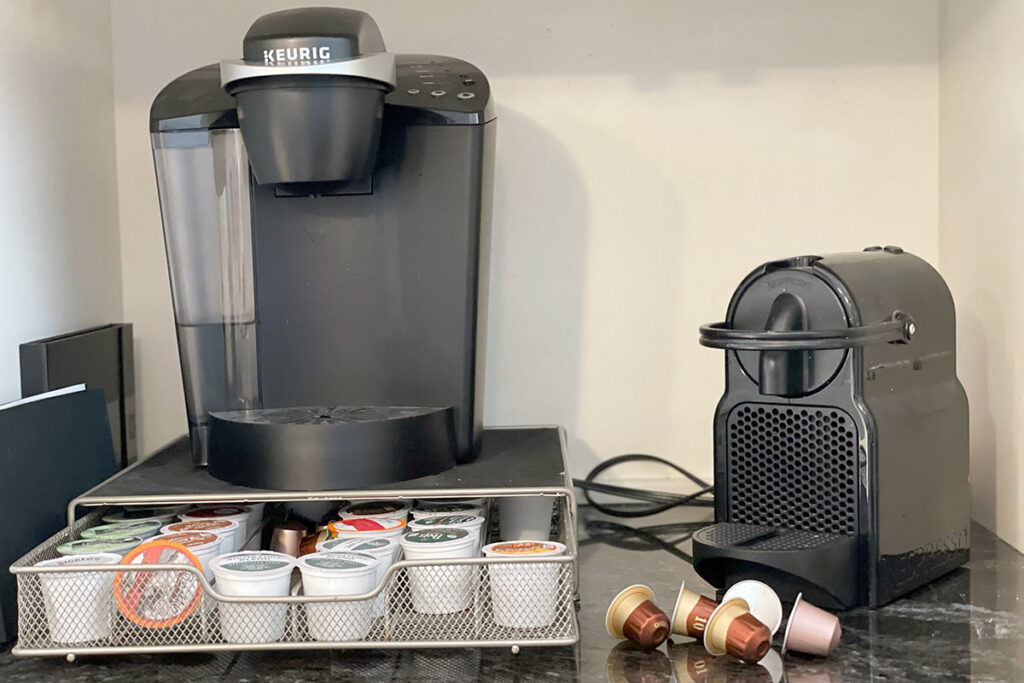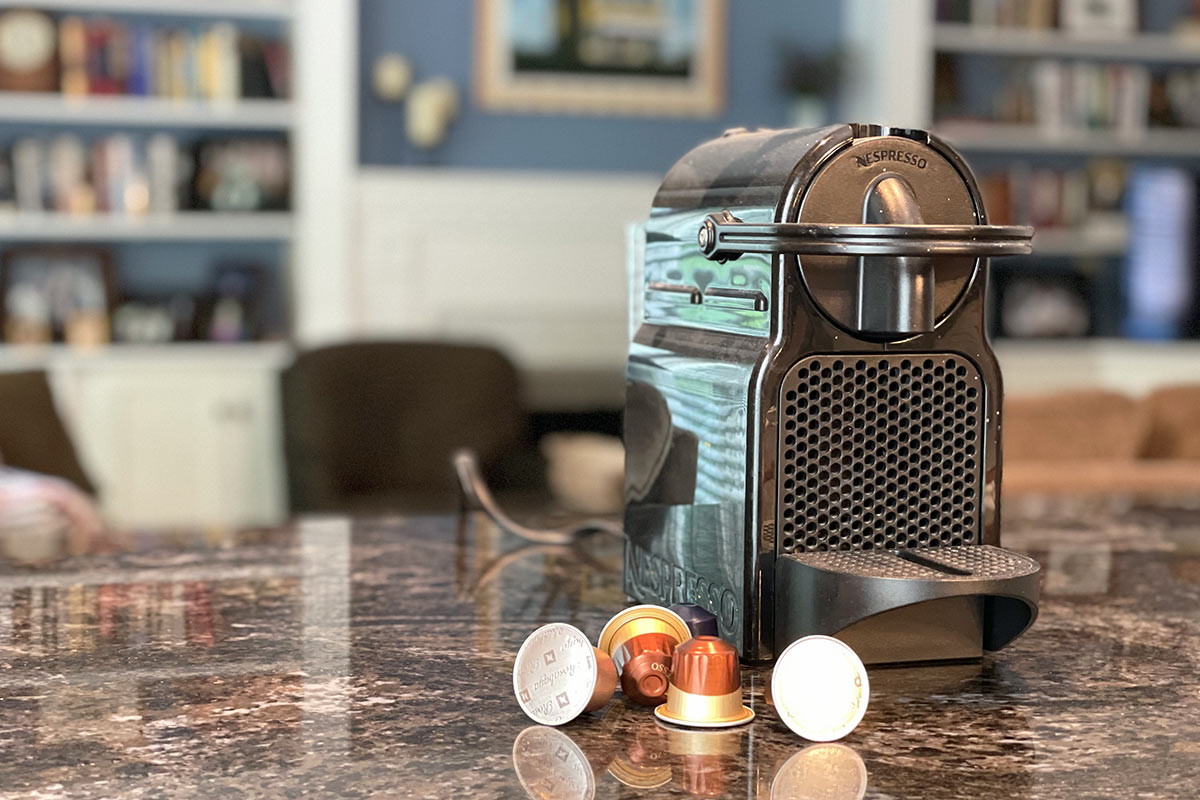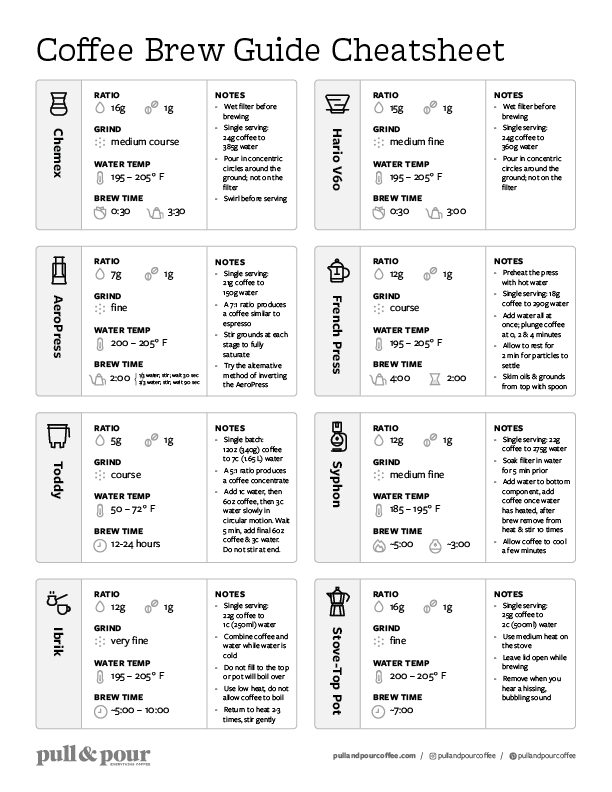So you’ve caught the specialty coffee bug? Perhaps you’ve binged the entire James Hoffmann YouTube channel, or progressed on to arguing with Sprometheus about the concept of ‘Dead Shots’? If you’re still quite new to this then chances are you’re fretting about what grinder to purchase, or whether or not you should jump down the giant rabbit hole that is espresso! But what if I were to tell you that you might not actually need to do any of this, and that all your coffee desires could potentially be fulfilled with one simple, compact device, along with some tiny magic bullets? I am of course talking about capsules, or pod coffee.
A Brief History of the Nespresso & Keurig Coffee Makers
For some time now a number of different systems have existed which dispense a single pre-dosed serving of coffee without the need for a grinder or bag of pre-ground; the two most well-known of these being the Nespresso and the Keurig. The Nespresso machine launched in the mid-1980s, and its somewhat rocky history has been well documented. As the name suggests, the original style Nespresso system delivers a short strong coffee that is similar to a traditional Italian espresso, albeit with some important differences. In Europe Nespresso really took off during the 1990s , helped considerably by the Starbucks and Friends influenced cappuccino boom, but surprisingly in the United States it was a tougher sell. What emerged in its place was the Keurig K-cup, a machine and capsule combination that produced a much longer coffee beverage far more in line with domestic American tastes (it’s not called an “Americano” for nothing!).

Capsule Coffee in Specialty Coffee
For many years the specialty coffee world simply ignored these innovations. This after all was a far cry from the high-scoring, lightly-roasted, single origin beans, championed by roasters and masterfully prepared by world class baristas. As the machines are built principally with convenience in mind, both the Keurig and Nespresso severely restrict the user’s ability to influence the variables of their extractions, and the extent to which these machines will appeal to those interested in having a close control over their brewing parameters will therefore naturally be limited. The Keurig also presents its own set of challenges, and although some have attempted to hack the K-cup, the way the system operates appears to be a little too far removed from optimal brewing methods to achieve decent results.
The potential for brewing better coffee using the Nespresso system seems much greater however, thanks largely to its closer proximity to real espresso. After Nespresso lost control of some of its key European patents in 2012, a number of specialty roasters in the UK began experimenting with putting their coffee into Nespresso compatible pods. Things really came to the fore in 2016 when reigning World Barista Champion Maxwell Colonna-Dashwood launched a capsule coffee subscription service with his roastery Colonna Coffee, which despite generating much discussion was widely met with acclaim. Since Colonna’s successful launch, many more high profile UK roasters have introduced pods as an option to their customers, and there are even subscription services dedicated to sending out a selection of pods from different roasters each month. No longer are capsule users confined to using off the shelf Nespresso machines either, with new models such as the Opal One and Dualit Cafe Plus having been designed specifically with specialty coffee in mind.
My Experience with Specialty Coffee and the Nespresso Machine
Prior to writing this article I had very little experience with pod machines, having only had Nespresso served to me by friends on a couple of occasions. After tracking down a used machine locally, I purchased some pods from UK specialty roaster Clifton Coffee. I chose Clifton because of my professional experience working with their products, and wanted to see if my results with their pods at home would come anywhere close to the quality of drinks I’ve made on bar. The coffee I made with the Village Espresso blend capsules was pretty much as advertised: notes of milk chocolate and a pleasant caramel sweetness on the finish. The shots had a smooth mouth-feel, with little discernible bitterness, and a noticeably lighter body and crema than a modern speciality espresso. The latter is probably to be expected, given that each pod only contains between five and six grams of coffee. To test whether the specialty pods were giving me any better of an experience than a standard Nespresso, I purchased some official capsules marketed by a popular high street coffee chain. In contrast to the Clifton pods, I found these extractions to be bitter, very dark – despite being sold as a “medium” roast – and having an almost artificial sweetness on the finish, which sat somewhat uncomfortably with a bitter, watery body.
It is not possible in an article of this length to discuss in detail all aspects of pod coffee, but what interests me most as both a keen home brewer and a coffee professional, is the experience of the user, and whether a capsule can really satisfy the enthusiastic specialty palate. The Nespresso system is certainly capable of producing a consistent beverage, and having the ability to explore different coffee origins side by side without making significant investments into both equipment and roasted beans certainly is appealing. Indeed, a quick glance at Facebook marketplace reveals to me a number of second hand machines for sale nearby, and I’d say there’s a reasonable chance you might know someone with one sitting unused a cupboard like I did! Although speciality roasters in the US have generally been slower to adapt their product for the capsule market, American consumers can still take advantage of international roasters doing so, particularly as pods will not stale at anywhere near the same rate as freshly roasted coffee.
The Bottom Line
Comparing capsules and more traditionally made coffee in the age of specialty pods is becoming increasingly moot, and as one prominent coffee blogger has put it, we should perhaps instead focus on judging ‘capsule coffee for what it is, not for what it isn’t.’ Coffee professionals I sense are often quite uneasy about the idea of serving “better” coffee in pods, thinking that it somehow undermines our craft. This I feel is an oversight, and misses one of the major aims of the specialty coffee movement: namely to champion the amazing origins and skillful farmers who produce these wonderful tasting crops, thereby making them more accessible to the wider public. In recent times our industry has made considerable shifts towards automation and standardization – the 18g in 36g out espresso ratio for instance sometimes feels like a law! – and as baristas we increasingly rely on our dose to order grinders and volumetrics to achieve a consistent product throughout service. For the discerning coffee drinker not interested in learning barista skills, who just wants a solid but interesting cup in the morning, a pod system is a great way of achieving this day to day. As passionate consumers sometimes blinded by our enthusiasm for the means rather than the ends, we would do well to sometimes consider what really keeps many people coming back to specialty coffee over and over again. Pure enjoyment.

